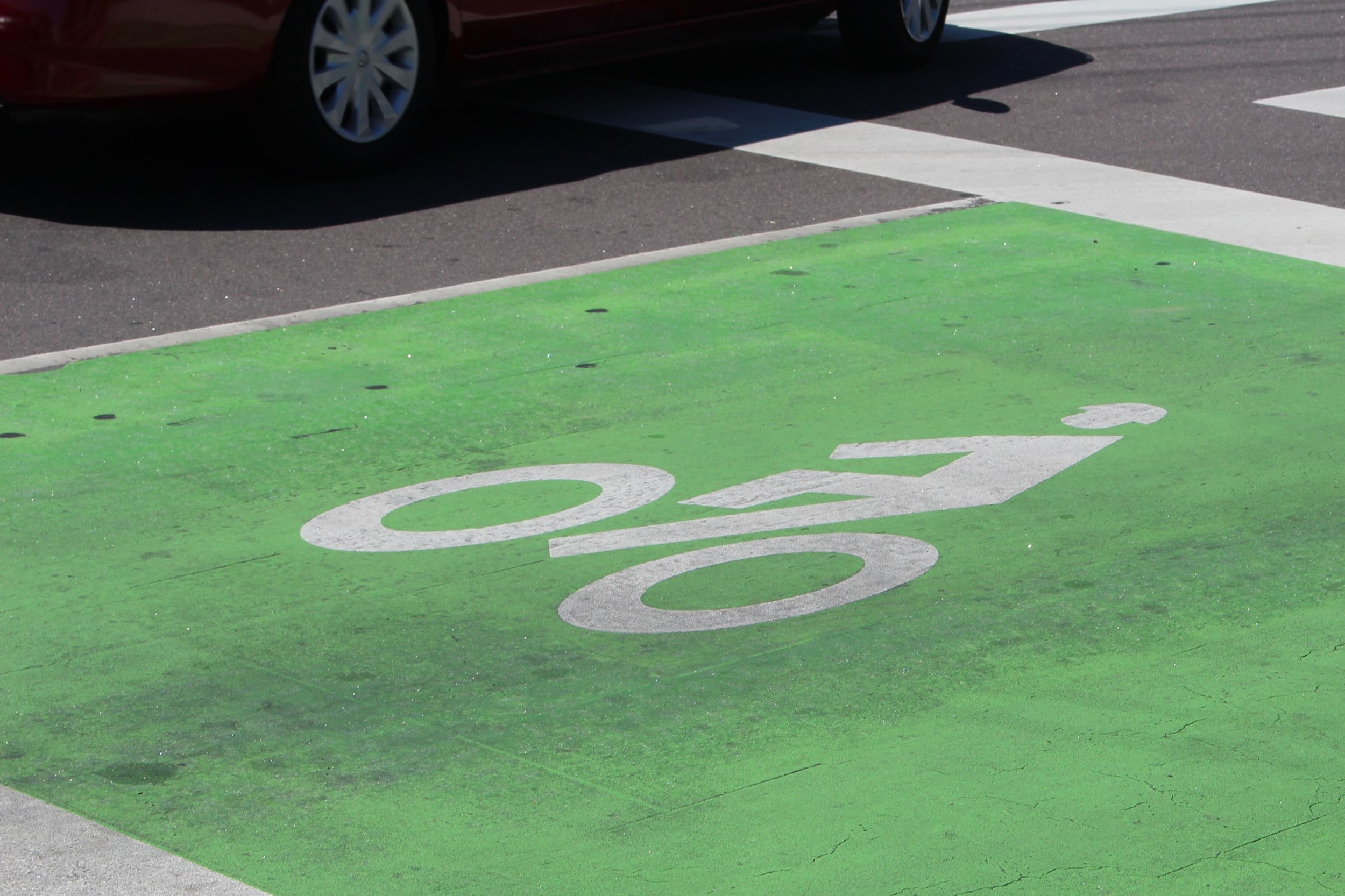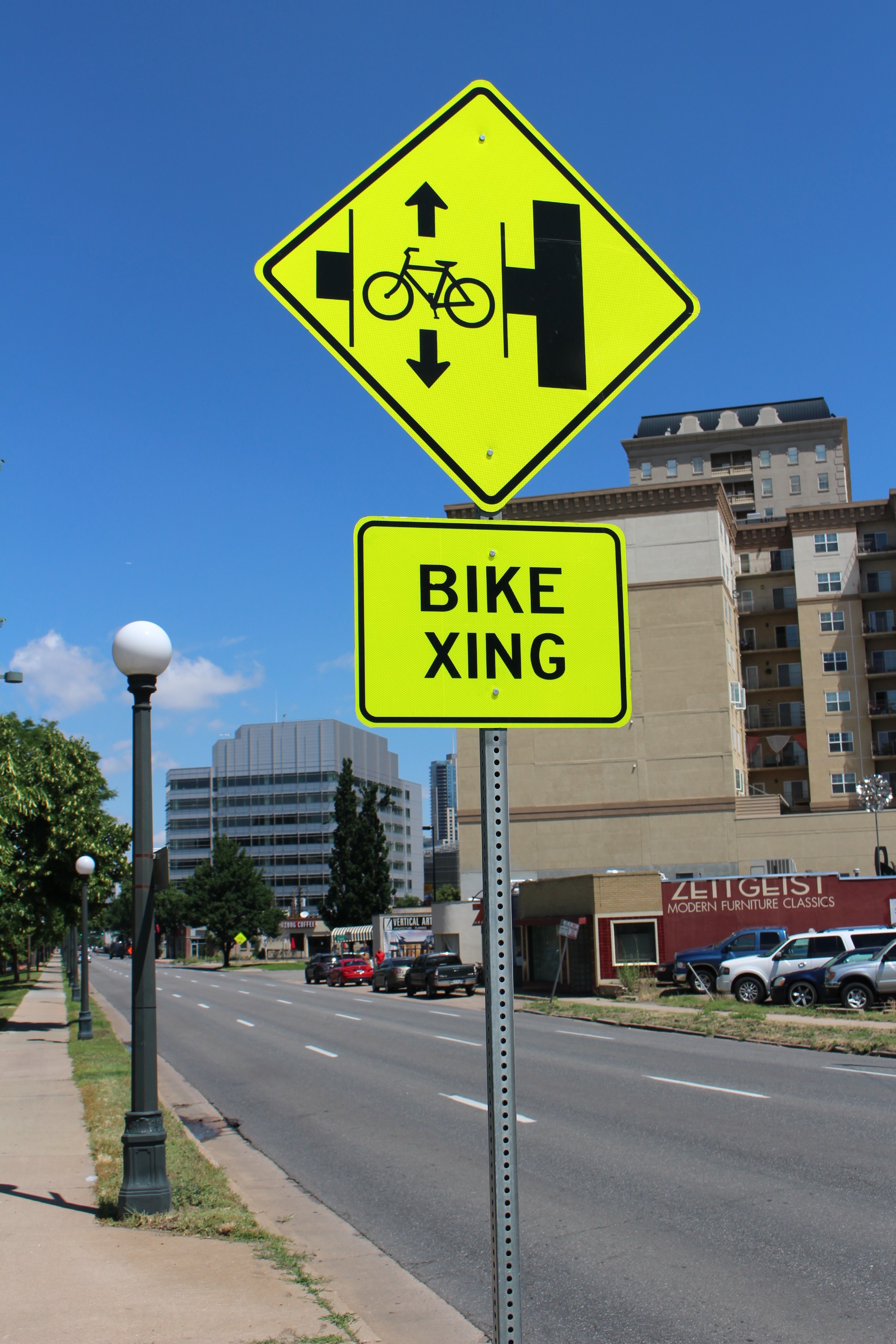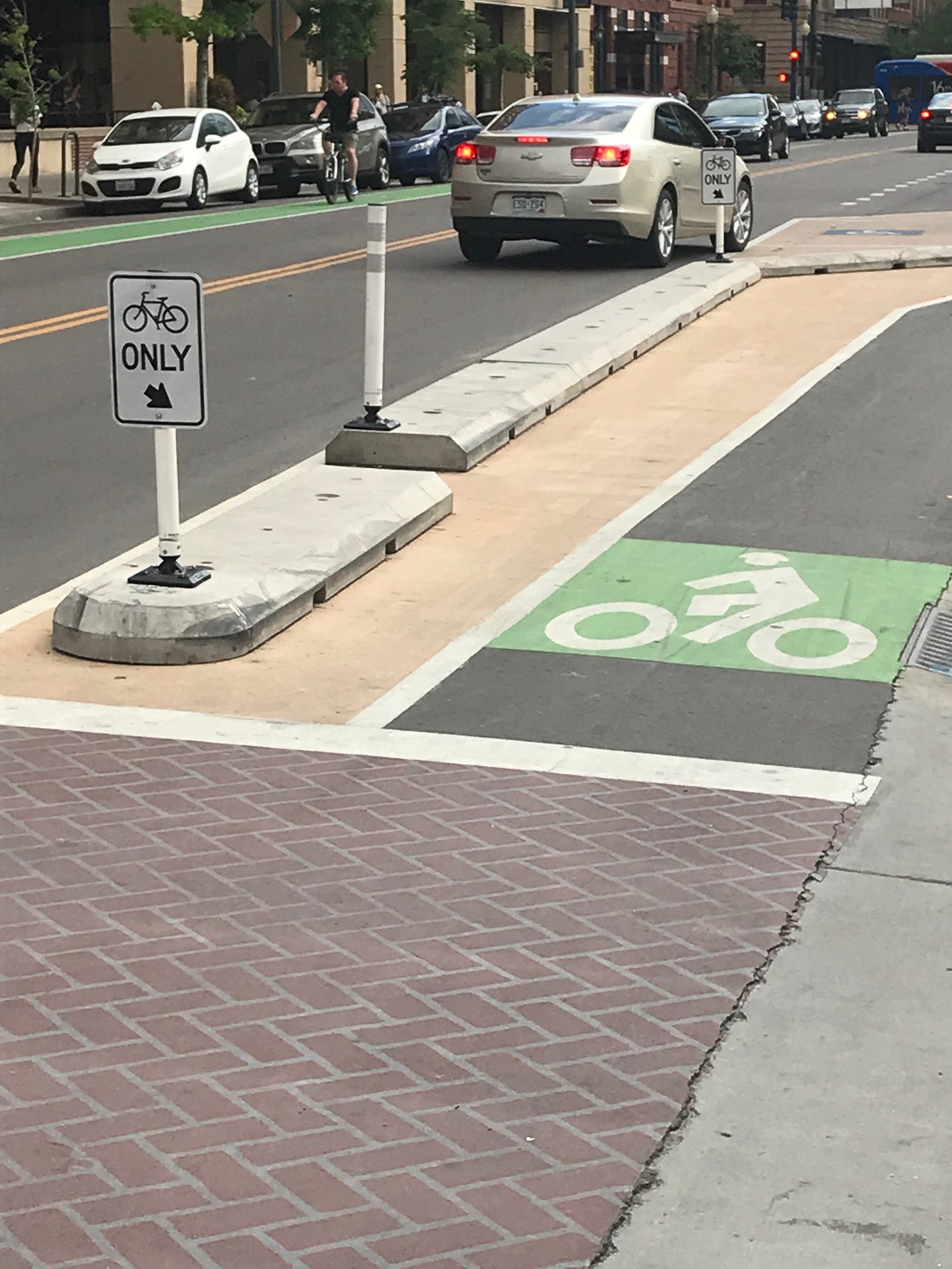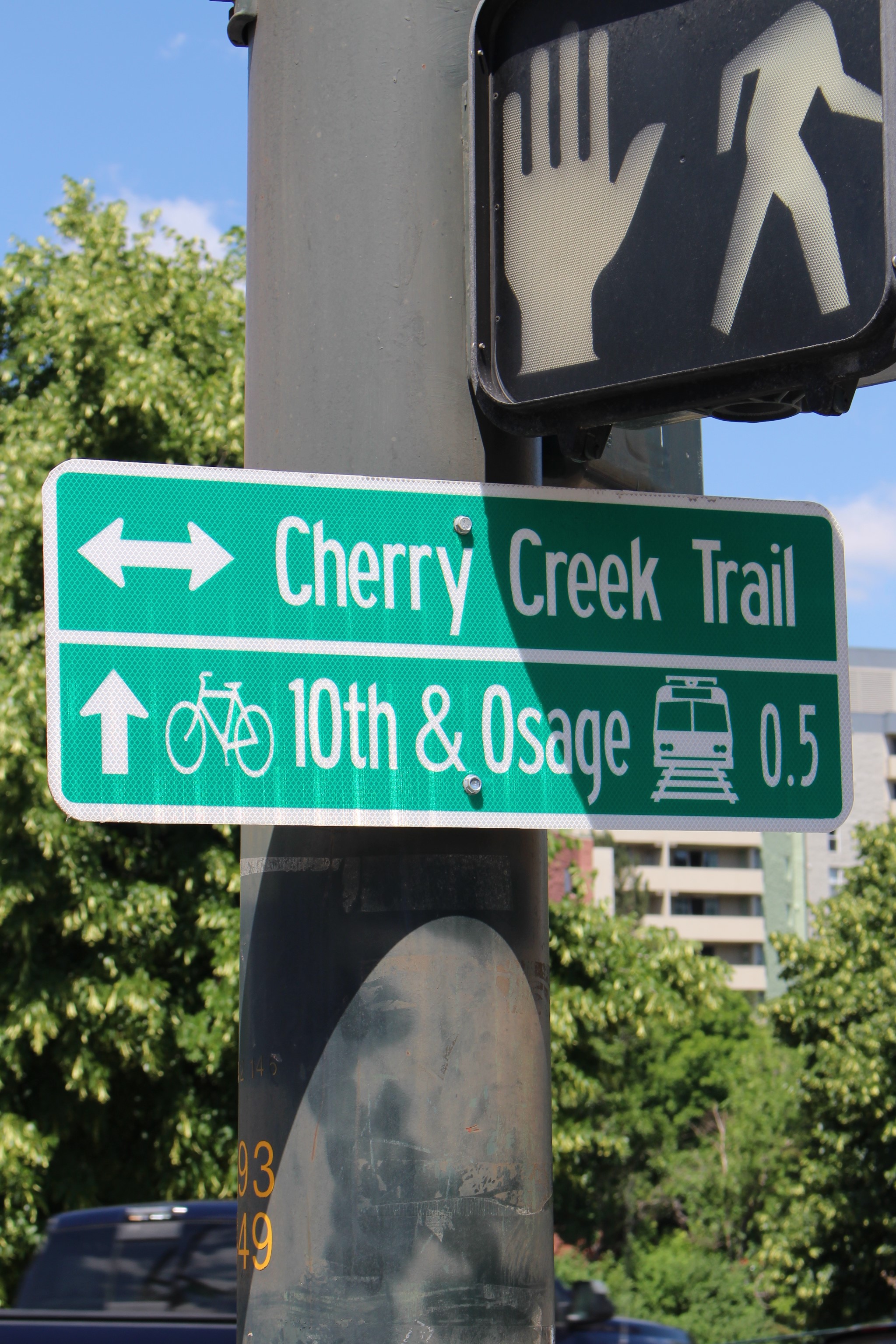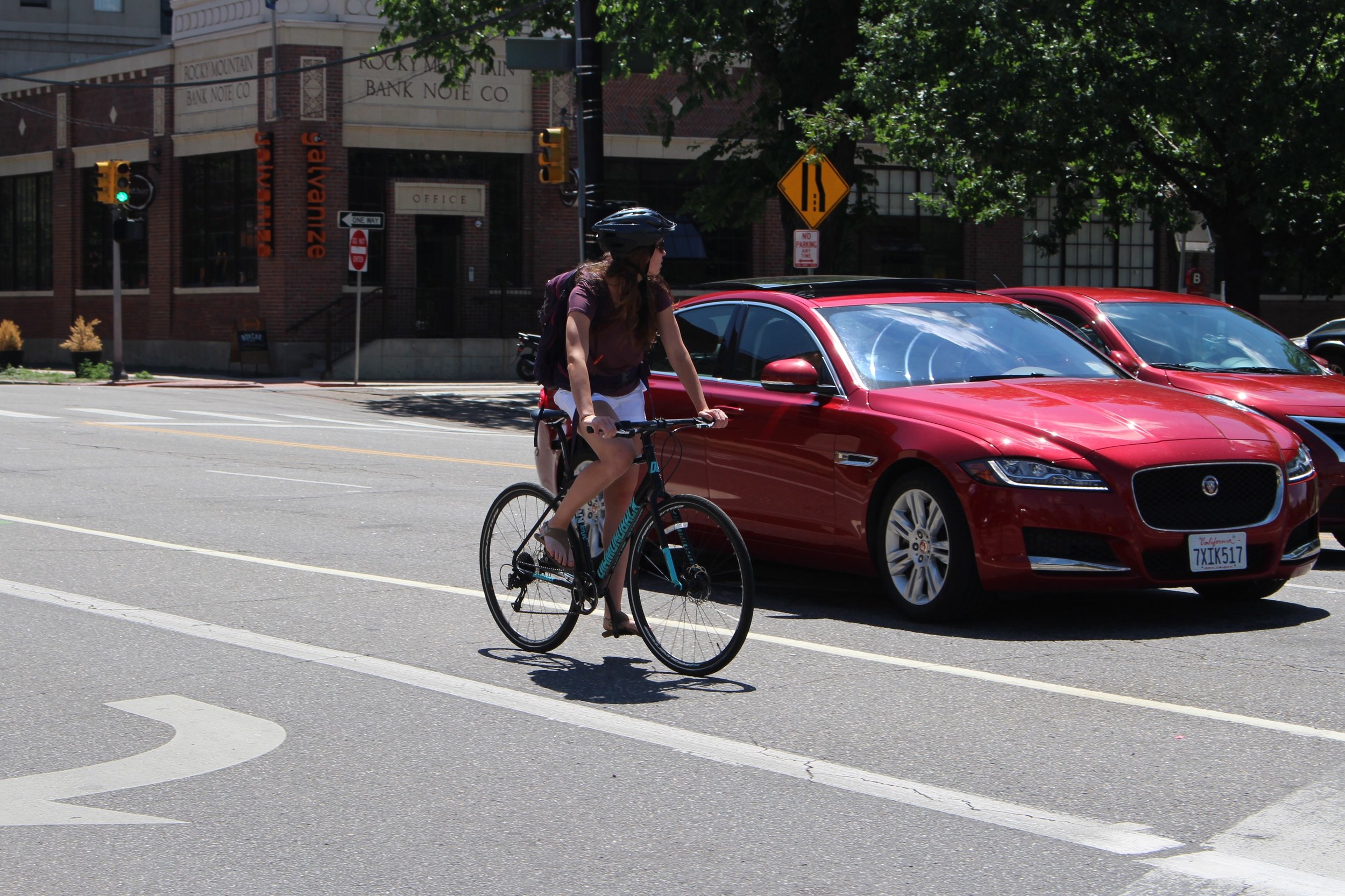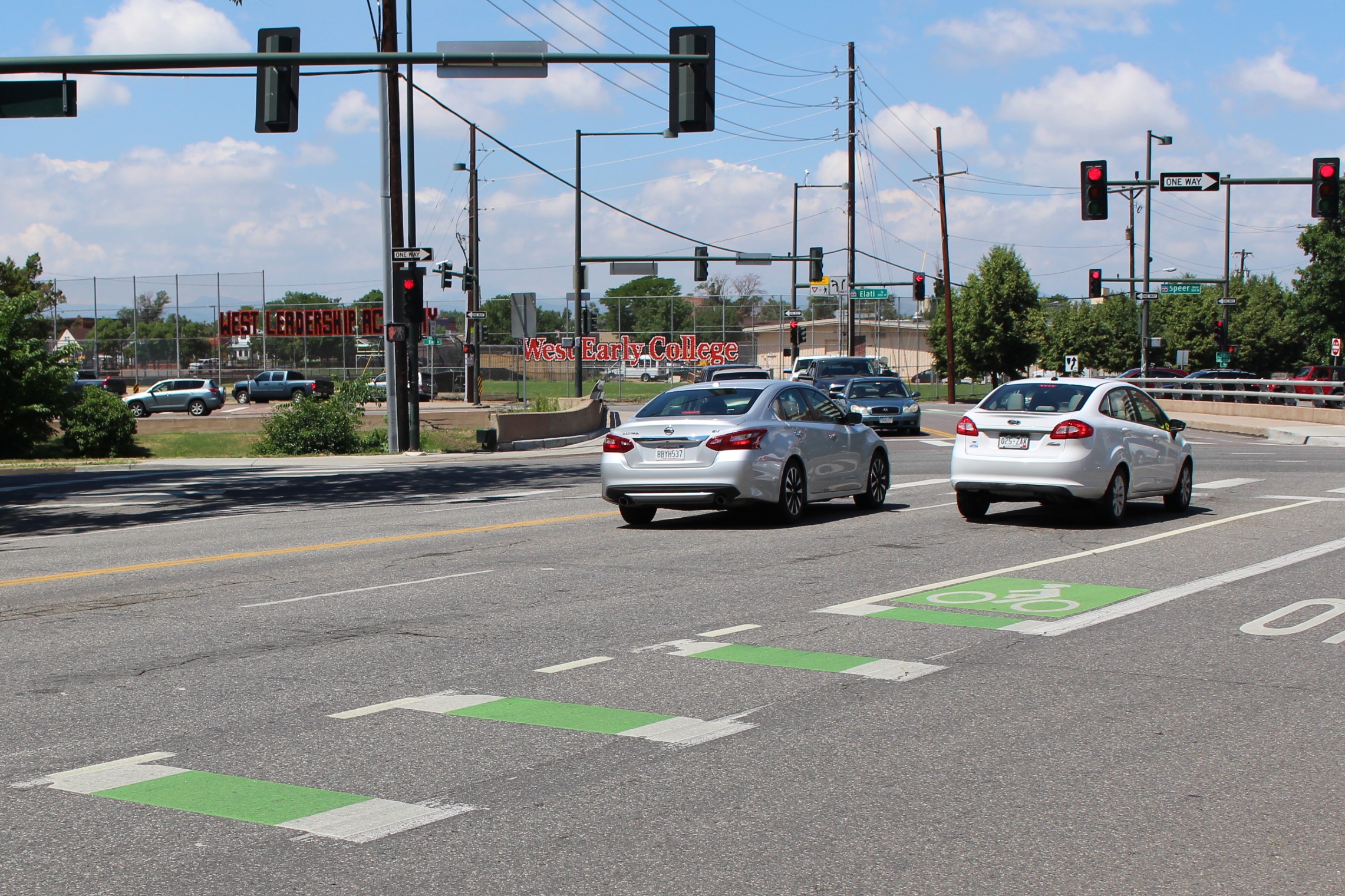We successfully defended a cyclist who was sued personally, when a woman stepped off an RTD bus into the bike lane, causing a collision between herself and the cyclist riding there.
The RTD bus stopped well back from the designated bus station (230 feet to be exact) in Boulder and began letting passengers off the bus, causing them to disembark out into the bike lane. The bus was stopped to the left of the bike lane and there were no other indications that the bus was doing anything besides stopping behind a line of cars at a red light. Caught completely off guard, our client was riding his bike in the bike lane on his way to work and suddenly had a woman stepping off the bus directly in front of him; there was no time or chance to avoid impact. Both the passenger and our cyclist client sustained injuries.
The passenger was cited by Boulder PD: “Pedestrian improperly entered roadway,” pursuant to 7-5-14:
7-5-14. - Pedestrian, Bicyclist, Human Powered Vehicle and Electric Powered Vehicle Entering Roadway: No pedestrian or driver of a bicycle, human powered vehicle, or lightweight electric vehicle shall suddenly leave a curb or other place of safety and walk, run, or drive into the path of a moving vehicle that is so close as to constitute an immediate hazard.
She (the bus passenger) went on to sue RTD and negotiated a settlement for her medical expenses and other claims. Nearly 3 years after the collision, she then served a lawsuit on our client, alleging all of the same injuries, damages and losses against him.
With no applicable insurance coverage to defend him, he sought our help in defending him in this frivolous lawsuit.
We initially believed the case would be thrown out on a statute of limitations issue: the lawsuit was brought over 2 years after the incident occurred. The 3-year Colorado SOL applicable to cases involving a motor vehicle, we argued, did not apply here, since the lawsuit was brought against our client- a cyclist -for acts arising out of his riding a bicycle. The incident involved an RTD bus, but this lawsuit against our client didn’t involve the Bus operation- it involved the cyclist and the pedestrian/bus passenger.
Shockingly, the Court denied our motion to dismiss. The lawsuit was allowed to proceed.
When Megan deposed the Plaintiff-passenger, she admitted she was looking to recover money from our client for the same claims and expenses she had recovered from RTD. She admitted she was seeking double recovery. She alleged she was embarrassed by the disfigurements to her face from the collision, specifically to her nose, yet finding her online we discovered she is a fire dancer in her spare time -- she dresses in small outfits, performing in front of crowds while waving fire sticks and hoola hoops around. Close ups of her face were plentiful- she did not look like a woman ashamed of her appearance online.
As her frivolous lawsuit proceeded, we had to seek sanctions not once but numerous times for her and her lawyer's failure to disclose the social media posts and content we sought in our discovery requests. We were successful in winning these sanctions motions, resulting in the Plaintiff's lawyer paying us for our time and expense in fighting to get those documents and posts.
As the case drew near to trial (having been postponed during 2020 due to COVID, it was set for trial this August 2021 in Boulder County), the Plaintiff's lawyers indicated they wanted to dismiss the lawsuit and asked for our agreement.
But by this point --well over 2 years into this odyssey, our client had incurred attorneys’ fees and we’d incurred thousands in case costs. We agreed to the dismissal of the lawsuit ONLY IF the Plaintiff would pay for our client's costs.
That's right. Our client -subjected to this frivolous lawsuit -recovered money from this plaintiff and her lawyers. The Plaintiff and her lawyers wrote US checks- for sanctions -and for settlement, in order to get their lawsuit dismissed.
This is what it means to zealously advocate for cyclists.
Most of the time we sit in the Plaintiffs' chairs... but now and then we wear the defense hat, as we did here.
And we do not take frivolous lawsuits against cyclists riding lawfully in bike lanes, lightly.




